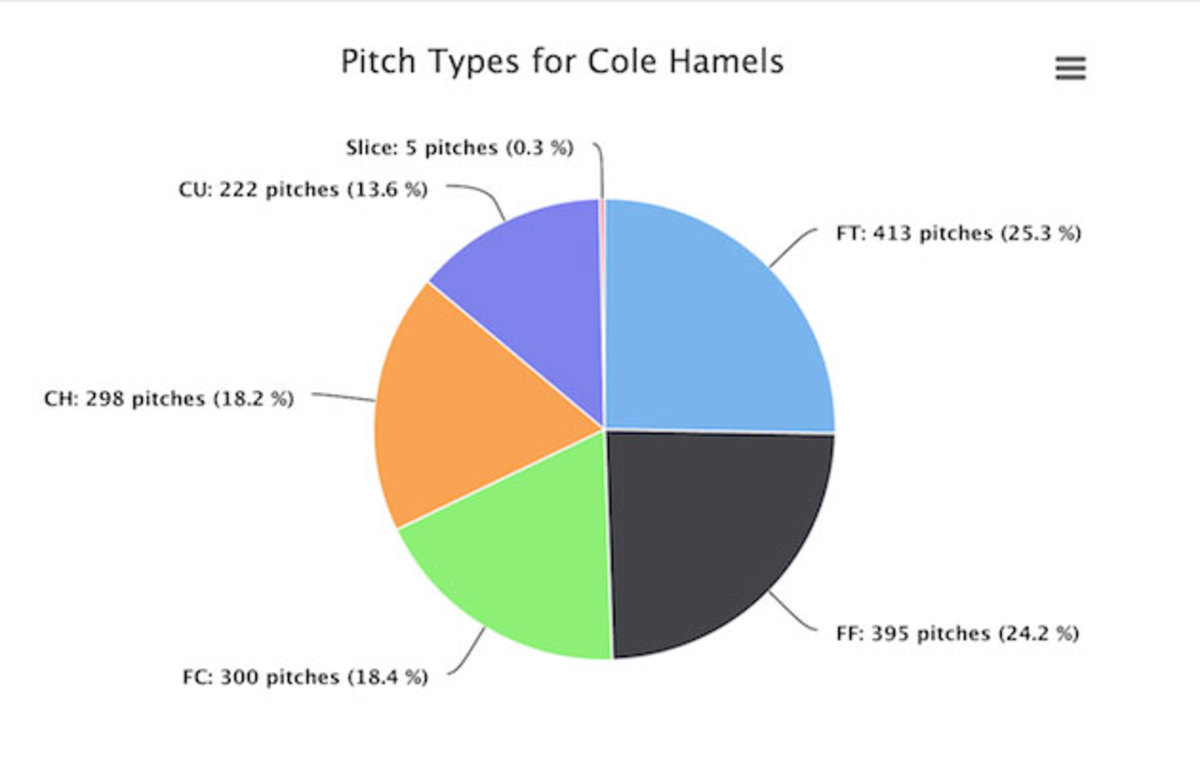Rangers’ Cole Hamels still improving pitches in twilight of his career

Your teams. Your favorite writers. Wherever you want them. Personalize SI with our new App. Install on iOS (iOS or Android)
The previous generation of pitchers is slowly but surely leaving the stage. It has already ceded prime positions of power Clayton Kershaw and Chris Sale, and their foot soldiers like Jose Fernandez and Noah Syndergaard. There’s already new guard ready to usurp what the old guard once held. For the latter to remain relevant, they must adapt with the changing tides of the game. One member of the old guard is riding the changes he has made to one of the finest seasons of his career—so good, in fact, that we might see him take the ball in the bottom of the first inning of the All-Star Game as the American League’s starter in his hometown.
Cole Hamels won his ninth game of the season earlier this week, shutting out the Yankees for seven innings while allowing six hits and striking out seven batters. He has a 2.60 ERA, 1.21 WHIP and 102 strikeouts in 103 2/3 innings. The 32-year-old Hamels isn’t exactly throwing it back to the days of the previous generation when he was a Cy Young contender for the Phillies. He is, however, anchoring the staff of the team with the AL’s best record, and he’s doing it by turning into the pitcher he has to be to succeed into his mid-30s.
• Buy/Sell/Hold: Why owners should consider a healthy Shin-Soo Choo
Back in 2010, Hamels started to trade four-seam fastballs for cutters, a change inspired by the arrival of Roy Halladay—the patron saint of cut fastballs—in Philadelphia. Hamels used the cutter sparingly in his first season sharing a rotation with Halladay, and then jumped to a 20.6% cutter usage rate in ‘11. The pitch was here to stay.
The following season, Hamels started experimenting with a two-seam fastball, and again, you didn’t have to look beyond Philadelphia’s rotation to find his inspiration. Cliff Lee, who returned to the Phillies in 2011 after spending the second half of the ’09 season with the team, always used his two-seamer as the foundation of his repertoire, and that tendency only increased as he got older. In Lee, Hamels had an example in his own clubhouse of a left-handed pitcher who used the two-seamer as the very cornerstone of his pitch mix, and leaned on it more and more as his career progressed.
To say the version of Hamels helping the Rangers to the best record in the AL this year is the answer to the answer to the question, “What would happen if Roy Halladay and Cliff Lee had a pitching baby?” is a bit of an overstatement, but it gets to the heart of the matter. Hamels, a pitcher who threw more than 50% four-seam fastballs in his mid-20s, has cut that rate in half, with his two-seamer and cutter filling the void. For the first time in his career, Hamels has a higher usage rate with his two-seamer (25.3%) than his four-seamer (24.2%), while his cutter checks in at an 18.4% usage rate.

Take a look at Hamels’s results by pitch. Hitters have managed a .198 batting average and .233 slugging percentage against the pitch this season. They’ve put it in play 58 times and gotten just one extra-base hit against it. From that foundation, Hamels is using the four other pitches in his repertoire effectively.
Unlike a four-seam fastball, two-seamers and cutters both have downward movement when they get into the hitting zone. Hamels’s other two pitches, his curveball and changeup, move downward, as well. Thanks largely to the two-seamer and its 71.8% ground-ball rate, Hamels is north of a 50% ground-ball rate for the first time since 2011. All of his pitches, other than the four-seamer, have ground-ball rates better than 50%.
• How Lindor’s adjusted swing has boosted his power
Hamels’s changeup has long been viewed as his best pitch. While he doesn’t use it nearly as much as he used to—its 18.2% usage rate this season would be comfortably the lowest of his career—it’s still quite effective. The offering has a 23.8% whiff rate, the best of any of Hamels’s pitches. What’s more, the movement of a two-seamer mirrors that of a changeup. Hamels’s increased usage of the former is giving more deception to the latter.
Let’s look at how Hamels can play the two pitches off each other in an at-bat. Hamels struck out eight batters in six innings in a win over the Reds on June 22. One of those came against Ivan DeJesus Jr. in the second inning. In a 1–1 count, Hamels went to his bread and butter, the two-seamer.
Two pitches later, with the count at 2–2, Hamels had DeJesus set up for his devastating changeup. As you can see from the following chart, courtesy of Brooks Baseball, Hamels’s vertical release points for his two-seamer and changeup are identical. Unless the pitcher guesses right or identifies the spin, he’ll have no idea what pitch is coming when its decision time. DeJesus does neither in this instance.
Hamels may be one of the final vestiges of the previous generation, but he’s not quite ready to completely hand the reins to the new guard. With the lessons learned from two of the best members of the generation that came before him, Hamels has changed his stripes. What hasn’t changed is his ability to shut down opposing lineups. The soon-to-be four-time All-Star is having one of the finest seasons of his career.
